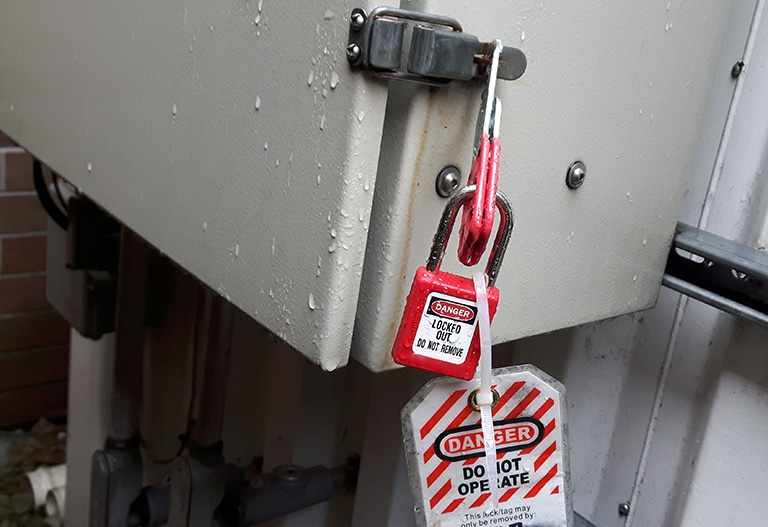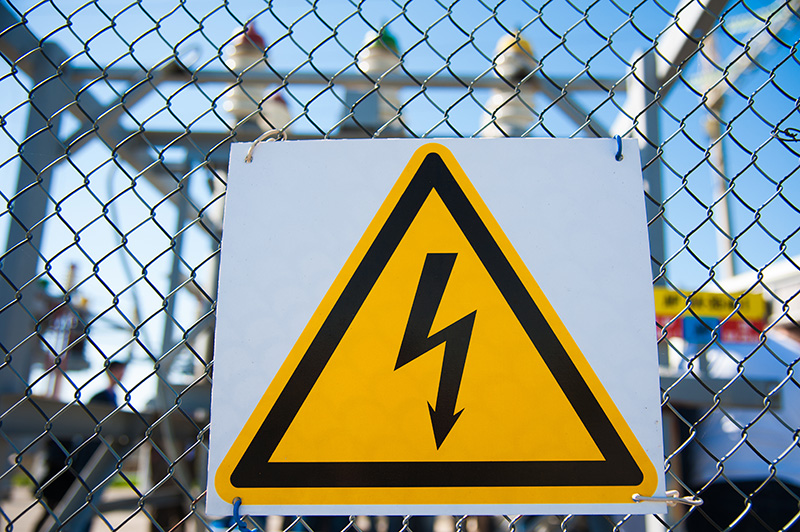
A little over 40 years ago, OSHA developed the first written standard for lockout/tagout* to help protect workers who were exposed to electrical hazards in the workplace. Since that time, the procedures and guidelines for establishing electrically safe work conditions have been refined and clarified. As a result, there has been a consistent decrease in electrical injuries over time. Although this has been a requirement for decades, correct adherence to the lockout tagout (LOTO) guidelines is not universal, even in 2024.
It is well known that the NFPA has set forth requirements for companies to conduct job safety training for employees, job safety planning before starting any job that involves exposure to electrical hazards, and job briefing with all employees involved in the work or exposed to electrical hazards. An integral part of this is the LOTO component of both the work planning and execution. The LOTO program must be a designated portion of the overall safety program developed by the company. The most current guidelines for training, definitions of qualified and unqualified workers, and safety program documentation requirements are spelled out in the 2024 NFPA 70E Standard.
NFPA 70E Standard
Keeping up with the changes and additional parameters and documentation rules for LOTO has presented challenges over the years. The 2018 edition of NFPA 70E updated the rules by expanding the definition of a LOTO and defined two types of LOTOs. It also established new rules based on the details of the task at hand.
Prior to 2018, there was just LOTO and the guidelines were very general, with all the rules essentially the same no matter what the parameters of the work being considered were. But when NFPA reviewed injury and fatality information, they determined that the safety of personnel would improve with the establishment of different levels of LOTO.
With this change, the original foundational components of LOTO procedures remained, including the requirements for employee involvement, planning, identification of sources of energy (electrical and otherwise), exposed persons, LOTO equipment and devices, and the identification of the person in charge. The difference was the establishment of the simple and complex LOTO thresholds and the recordkeeping requirements that apply at each level.

Simple LOTO vs. Complex LOTO
The 2024 standard defines a simple LOTO procedure as one that involves only qualified person(s) de-energizing a single circuit part or set of conductors to protect employees from exposure to electrical hazards. There is no separate documentation requirement for this type of LOTO, although it must be part of the regular job safety planning. Employees are responsible for their own LOTO. This type of LOTO may involve multiple employees and require the use of multiple locks, but still can remain a simple LOTO.
The biggest confusion happens, especially where documentation is concerned, when the parameters of the LOTO become more complex or difficult, hence the designation. There are eight conditions that can classify a LOTO as complex; only one of these needs to apply for the type of LOTO to change from a simple LOTO to a complex one. An additional level of safety, vigilance, and planning is required for all complex LOTO activities.
The conditions for a complex LOTO are as follows:
- Multiple energy sources
- Multiple crews
- Multiple crafts
- Multiple locations
- Multiple employers
- Multiple disconnecting means
- Particular sequences
- A job or task that continues for more than one work period
The awareness of multiple energy sources has always been a concern, but the increased use of generators, alternative power sources, and backup systems has demonstrated the need for additional care; verifying multiple methods of disconnecting an electrical source can catch alternate or undocumented feeds. Considering the potential for heightened safety concerns when crews are working out of sight of one another, and/or other trades or companies are on site simultaneously, helps to protect all workers. Coordinating safety paperwork among all involved can reduce the chance of inadvertent exposure, especially during testing. Ensuring the safety of personnel when work extends beyond one shift, often for days, has been made both more effective and more streamlined with the addition of the complex classification as there is now a means to retain a lockout and transfer responsibility to other qualified individuals over multiple shifts.
The threshold for a complex LOTO designation is relatively low. If any one of the conditions for a complex LOTO are met, the procedural rules are expanded to include a documentation requirement. This requirement helps to ensure that the planning process takes as many potential hazards as possible into account before work begins and provides a safety framework for all the facets of the LOTO process. There are many components required for this paperwork. Every complex LOTO requires the following:
- Create a written plan of execution that identifies the qualified and authorized person in charge and clearly identifies when and where the LOTO applies
- Account for all personnel participating in the LOTO
- Identify the elements of control
- Establish a qualified person doing the switching and the method of de-energizing the source(s)
- Account for any other types of energy present, such as steam, hydraulic, stored electrical energy (capacitors), compressed air, etc.
- Identify the means to verify that the circuit is open/de-energized
- Identify the qualified person that is verifying the correct implementation of the LOTO
- Establish a step for confirmation that equipment cannot be restarted
- Identify the proper test equipment to be utilized, the PPE required, and the requirement to test before touch, preferably using the live-dead-live method
- Identify what, if any, grounding requirements need to be met (grounding needs may be covered elsewhere on other job safety documentation pertaining to the work)
- Establish the procedure to transfer responsibility of the LOTO in the event that the LOTO extends past one shift
- Establish how tasks at remote locations or related jobs will be coordinated
- Establish procedures for removing LOTO devices when/if the original installer is not available
- Establish procedure(s) for returning the equipment to service
- Establish procedures for temporary release for testing (these procedures can be identical to the return to service steps)
As you can see, the extensive written requirements are well beyond the scope of an average Job Safety Analysis or Job Hazard Analysis form used by most companies. It is quite common to have separate LOTO documentation so that all parameters can be covered. Developing a procedure for considering as many of the potential hazards as possible and the accompanying written plan has increased awareness among all employees exposed to electrical hazards, especially since there is the ability to inform all parties of those hazards. The 2024 NFPA 70E provides sample guidelines, including LOTO, to assist in the development and refinement of an overall electrical safety program. This additional required paperwork has the potential to be a great safeguard to all workers exposed to electrical hazards. It also provides a good tool for companies to enhance and improve processes and procedures when work is performed in their facilities.
*Title 29 Code of Federal Regulations (CFR) Part 1910.147, 1982.
Author Denise Green is the Midwest regional sales manager and national breaker specialist for Group CBS and has been in the electrical distribution industry for 33 years.
Learn more:
